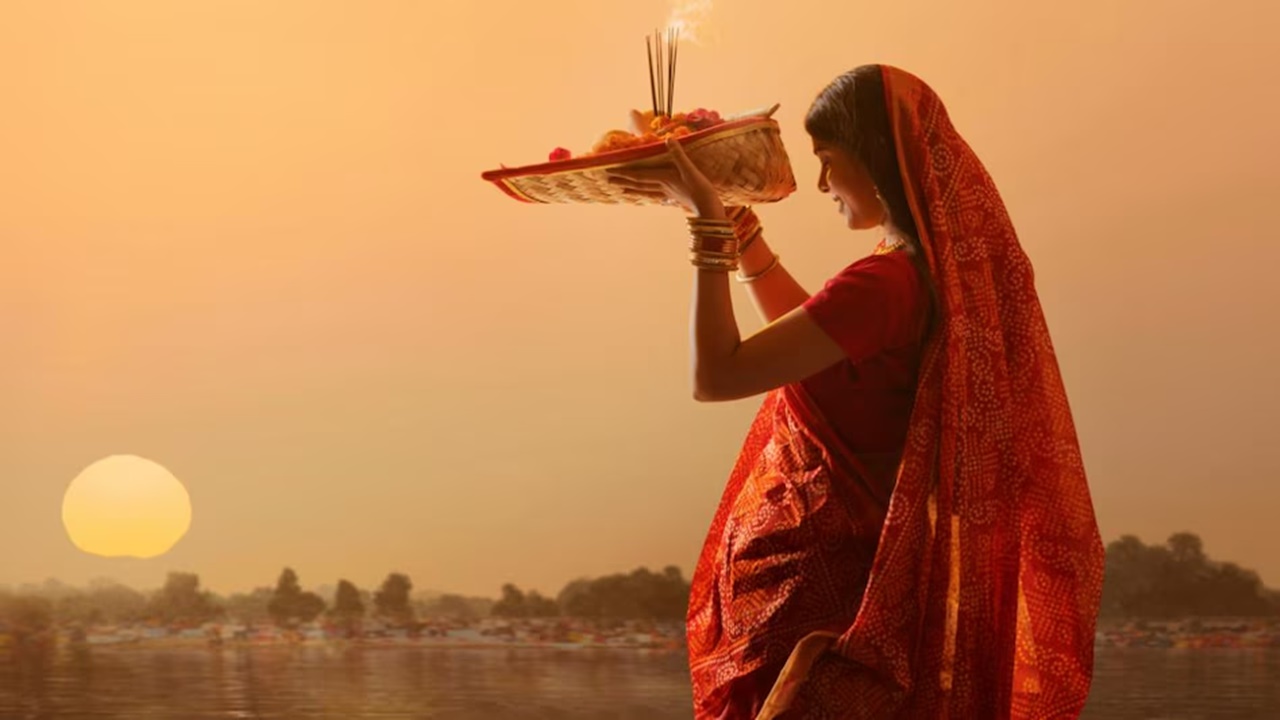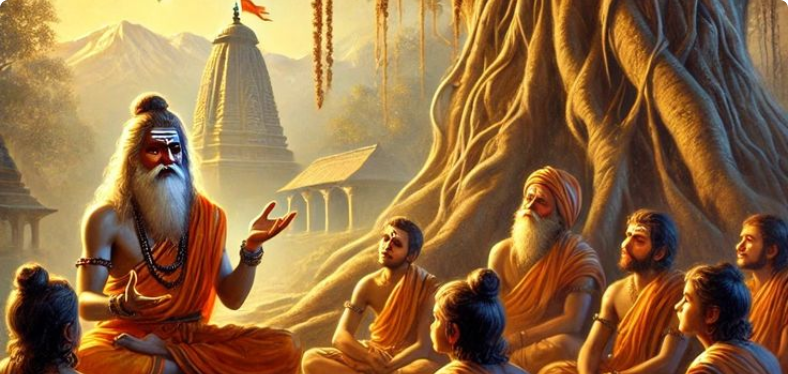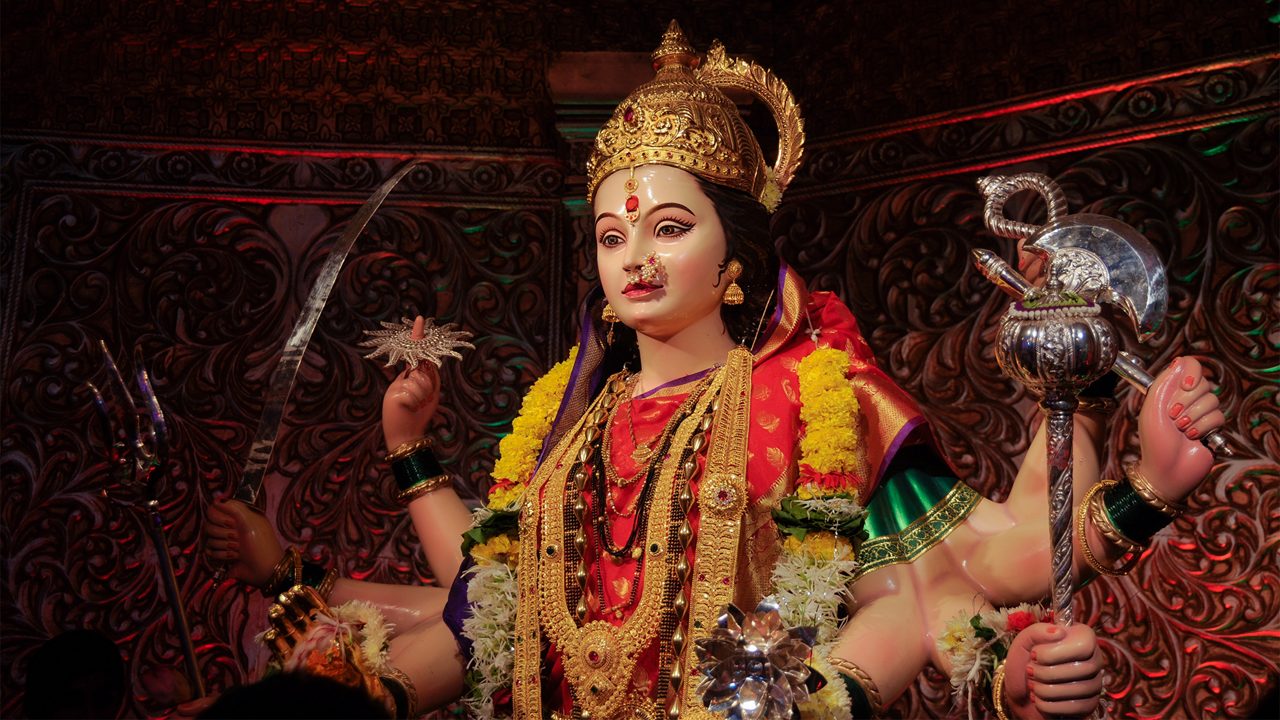
October 05, 2025
Festival Fast
3 min read
Chhath Puja
Chhath Puja is one of the most sacred festivals dedicated to the Sun God (Surya) and Chhathi Maiya. It is celebrated mainly in Bihar, Jharkhand, Uttar Pradesh, and Nepal with great devotion. The festival lasts for four days and includes rituals like fasting, taking holy dips, and offering arghya (water offerings) to the rising and setting sun.
Chhath is not just a festival — it is a celebration of gratitude, purity, and faith. People pray for the well-being of their family and thank the Sun for sustaining life on Earth. The sight of devotees standing in rivers at sunrise and sunset creates a truly divine and peaceful atmosphere.
🌅 Introduction
Chhath Puja is one of the oldest and most sacred festivals in India. It is dedicated to Lord Surya (the Sun God) and Chhathi Maiya, believed to be the sister of Surya. The festival celebrates gratitude, purity, and discipline. It is mainly celebrated in Bihar, Jharkhand, Uttar Pradesh, and Nepal, but today people across India and the world participate in it with devotion and joy.
Chhath Puja usually falls six days after Diwali, during the month of Kartik (October–November), when the weather is calm and pleasant. The entire environment fills with songs, devotion, and the fragrance of freshly made Thekua — a special sweet offered during the ritual.
📜 Origin of Chhath Puja
The origin of Chhath Puja goes back thousands of years. According to Hindu mythology, the tradition began during the Mahabharata era.
It is said that Draupadi and the Pandavas performed Chhath Puja to thank the Sun God for helping them regain their lost kingdom.
Another story links the festival to Karna, the son of Surya and Kunti. Karna was a great warrior who worshipped the Sun every morning while standing in the river. Because of his deep devotion, he is considered one of the first worshippers of Chhath.
Apart from these stories, ancient texts mention that people in the Vedic age used to worship the Sun for good health, long life, and prosperity. Thus, Chhath Puja is not just a religious festival but a continuation of India’s oldest nature-worship tradition.
🌻 Four Days of Chhath Puja
The festival is celebrated over four days, each with special rituals and significance:
Nahay-Khay (First Day):
Devotees bathe in rivers or ponds and clean their homes. They prepare simple, satvik (pure) food — often rice and pumpkin — to begin the fasting ritual.
Kharna (Second Day):
Devotees observe a day-long fast without water. In the evening, they prepare kheer (rice pudding) and chapatis, which are offered to the Sun and then shared with family and neighbors.
Sandhya Arghya (Third Day):
This is the main day of the festival. Devotees gather at riverbanks during sunset, carrying bamboo baskets filled with fruits, Thekua, and sugarcane. They offer arghya (water offering) to the setting Sun and sing devotional songs.
Usha Arghya (Fourth Day):
The final morning, devotees return to the river to offer prayers to the rising Sun, seeking blessings for health, prosperity, and family happiness. After this, the fast is broken.
🌞 Meaning and Beliefs
Chhath Puja is based on the belief that the Sun God sustains life on Earth. Worshipping him with a pure heart brings energy, peace, and prosperity. The rituals also include a deep respect for nature and water, teaching people to live in harmony with their surroundings.
🌼 Interesting Facts about Chhath Puja
Chhath is the only festival where both the setting and rising Sun are worshipped.
No priest is needed — all rituals are performed by devotees themselves.
Devotees prepare Thekua, fruits, and rice laddoos as holy offerings (prasad).
The festival is eco-friendly, as everything used — from bamboo baskets to fruits — is natural.
The songs sung during Chhath, called Chhath Geet, are passed down through generations and reflect devotion and simplicity.
🌺 Conclusion
Chhath Puja is more than just a festival — it is a celebration of faith, purity, and gratitude. It connects humans with nature and reminds us to live a disciplined, thankful life. As the Sun rises on the final day, it fills hearts with hope, joy, and the promise of new beginnings.
Chhath Puja is one of the oldest and most sacred festivals in India. It is dedicated to Lord Surya (the Sun God) and Chhathi Maiya, believed to be the sister of Surya. The festival celebrates gratitude, purity, and discipline. It is mainly celebrated in Bihar, Jharkhand, Uttar Pradesh, and Nepal, but today people across India and the world participate in it with devotion and joy.
Chhath Puja usually falls six days after Diwali, during the month of Kartik (October–November), when the weather is calm and pleasant. The entire environment fills with songs, devotion, and the fragrance of freshly made Thekua — a special sweet offered during the ritual.
📜 Origin of Chhath Puja
The origin of Chhath Puja goes back thousands of years. According to Hindu mythology, the tradition began during the Mahabharata era.
It is said that Draupadi and the Pandavas performed Chhath Puja to thank the Sun God for helping them regain their lost kingdom.
Another story links the festival to Karna, the son of Surya and Kunti. Karna was a great warrior who worshipped the Sun every morning while standing in the river. Because of his deep devotion, he is considered one of the first worshippers of Chhath.
Apart from these stories, ancient texts mention that people in the Vedic age used to worship the Sun for good health, long life, and prosperity. Thus, Chhath Puja is not just a religious festival but a continuation of India’s oldest nature-worship tradition.
🌻 Four Days of Chhath Puja
The festival is celebrated over four days, each with special rituals and significance:
Nahay-Khay (First Day):
Devotees bathe in rivers or ponds and clean their homes. They prepare simple, satvik (pure) food — often rice and pumpkin — to begin the fasting ritual.
Kharna (Second Day):
Devotees observe a day-long fast without water. In the evening, they prepare kheer (rice pudding) and chapatis, which are offered to the Sun and then shared with family and neighbors.
Sandhya Arghya (Third Day):
This is the main day of the festival. Devotees gather at riverbanks during sunset, carrying bamboo baskets filled with fruits, Thekua, and sugarcane. They offer arghya (water offering) to the setting Sun and sing devotional songs.
Usha Arghya (Fourth Day):
The final morning, devotees return to the river to offer prayers to the rising Sun, seeking blessings for health, prosperity, and family happiness. After this, the fast is broken.
🌞 Meaning and Beliefs
Chhath Puja is based on the belief that the Sun God sustains life on Earth. Worshipping him with a pure heart brings energy, peace, and prosperity. The rituals also include a deep respect for nature and water, teaching people to live in harmony with their surroundings.
🌼 Interesting Facts about Chhath Puja
Chhath is the only festival where both the setting and rising Sun are worshipped.
No priest is needed — all rituals are performed by devotees themselves.
Devotees prepare Thekua, fruits, and rice laddoos as holy offerings (prasad).
The festival is eco-friendly, as everything used — from bamboo baskets to fruits — is natural.
The songs sung during Chhath, called Chhath Geet, are passed down through generations and reflect devotion and simplicity.
🌺 Conclusion
Chhath Puja is more than just a festival — it is a celebration of faith, purity, and gratitude. It connects humans with nature and reminds us to live a disciplined, thankful life. As the Sun rises on the final day, it fills hearts with hope, joy, and the promise of new beginnings.


